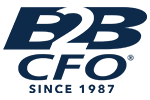
Cash Flow Management Tips for Uncertain Times
Posted on July 14, 2022 by Peggy Head
Whether it was navigating the new normal to handling the Great Resignation to today’s supply chain, inflation and potential recession challenges, companies have been facing a time where managing cash flow is more important than ever. Between increased costs and lowered sales, some businesses will find themselves low on cash, perhaps to the point of significantly impacting their ability to meet operating costs and stay afloat.
The Washington Post recently released information on the Federal Reserve “raising interest rates aggressively to combat the worst inflation in 40 years, and such campaigns have tended to tip the economy into recession.” According to William Dunkelberg, chief economist at the National Federation of Independent Business, there is a 70% chance the economy is heading into a recession in the next year.¹
Now is the time to do what is necessary to preserve cash. Here are some cash flow tips for times of economic uncertainty:
1. Understand the causes of negative cash flow:
The most common reasons behind negative cash flow are fast growth, gross margin deterioration (a big gap between sales price and cost of the products sold) or timing differences between making sales and paying off expenses like vendor supplies, employee salaries or day to day operations.
2. Proactive Forecasting:
The best way to stay ahead of difficult times is to be prepared. Every business will experience fluctuations in cash flow and it’s best to prepare income statements, projected cash flow and a statement of receipts and disbursements for the coming 6-12 months. Forbes reported that “many small businesses, even profitable ones, workwithin slim margins with little wiggle room for large purchases or economic setbacks—
[then] factor in debt repayments, delinquent payments and unpaid invoices and you have a business that’s walking a very tight rope.” One “report suggested that 31% of SMBs have up totwo months of working capital, while 58% only have enough to last three to five months.” ²
Businesses may need to live and breathe their forecasts every day in order to survive.
3. Consistent Budgeting:
You can work with a trusted strategic advisor like a B2B CFO® in order to plan quarterly and yearly budgets accordingly. By careful planning, strategic contracts with vendors, or collecting department leads’ numbers on how much operations for that team cost, for example, you can give your business the time to rethink expenses and profits, or make different decisions for the year that can save some money. Be sure to assess your finances from the year before and adjust any numbers for upcoming changes, like new pricing or new hires. Remember that budgeting cash flows to actual deposits and expenditures helps you predict your future cash flow.
4. Proper Cash Management Tools:
Investing in the right cash flow management software can save your business money in the long run. It can help you manage the cash flows that ebb and flow in your business and see what transactions are sustainable and which are hurting you. Work with a B2B CFO® Partner to
understand which tools connect Income Statement and Balance Sheet information from your accounting software into organized cash flow statements and reports. These solutions can crunch the numbers and help you develop financial strategy in real-time— as well as forecast various outcomes depending on hypothetical decisions.
5. Collect A/R & Invoice Early And Stretch AP
Invoice your customers daily or immediately after a product or service is bought and supplied. It’s also important to actively pursue established collection policies with your accounts receivable. Consider establishing a collection process or even a late fee if a customer does not pay their invoice on time and be sure to coordinate their payments with your payments to suppliers and vendors. Also, try to lengthen your AP cycle where possible.
6. Assess Purchasing Policies and Vendor Contracts:
To have good business, you need to invest in inventory that sells but be sure to keep inventory levels at the minimum. Try to adjust how much inventory you’re buying, evaluating your customer’s demand to have the proper supply. Over-spending on inventory that ultimately won’t sell can decrease your cash flow immensely. In parallel, help your accounts payable out by avoiding late fees or interest charges. Think about which vendors you can have a relationship with and ask for extended terms or contracts where you can pay later.
7. Open a Line of Credit:
Your bank can be your best friend if you have the right relationship. Work with a strategic business advisor like a B2B CFO® to cultivate a mutually beneficial bank relationship where you open a business line of credit that works for you, so that you can avoid any risk of rejection if times get tough. This way, you have an established resource to turn to if money does ever get tight.
8. Hire the Best:
Having the right talent with the right vision and bigger picture is essential to cash flow management. You need business and financial expertise that understands and promotes efficiency within teams and seeks out solutions that benefit the company. To this end, working with a trusted advisor is critical for cash flow management as the right expertise can lead to the right understanding of your expenses, revenue and business. Improving cash flow requires the discipline of looking into the future. Improving and managing cash flow is a process within a company and not vested with any one single person. That’s why CEOs and Business Owners turn to a B2B CFO® for financial expertise and best practices for managing cash flow. Our Partners can examine your current cash flow trends and using best practices and forecasting tools, we can ensure you have a financially healthy future for your company.
Sources:
¹ Small Businesses are Flashing a Recession Warning Signal.
² How Cash Flow Forecasting Could Help Save Some Small Businesses From Failure.

